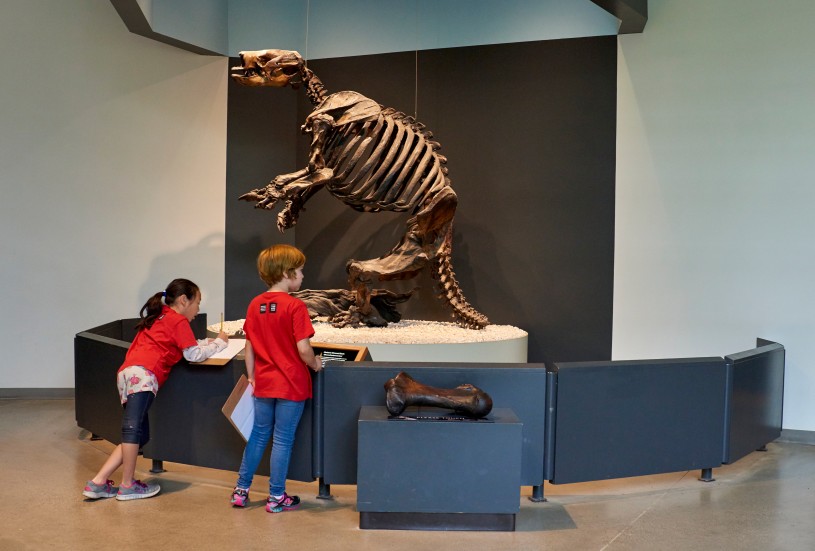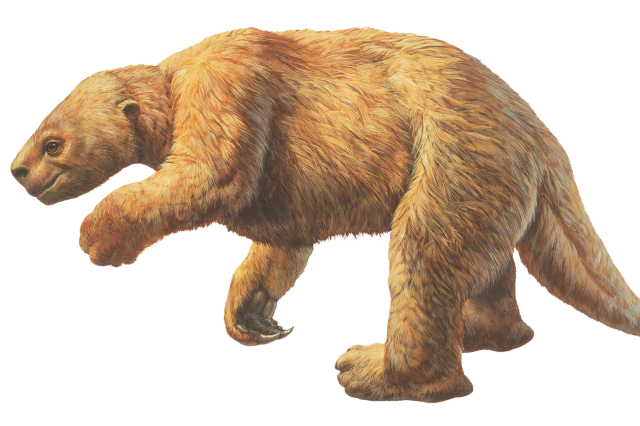Pick Your Summer! Chill or Fierce? Sloth or Saber-toothed?
Are you a saber-toothed cat person? Or do you prefer to chill with giant sloths? Plan a trip to the Tar Pits to learn all about these polar opposite Ice Age mammals.
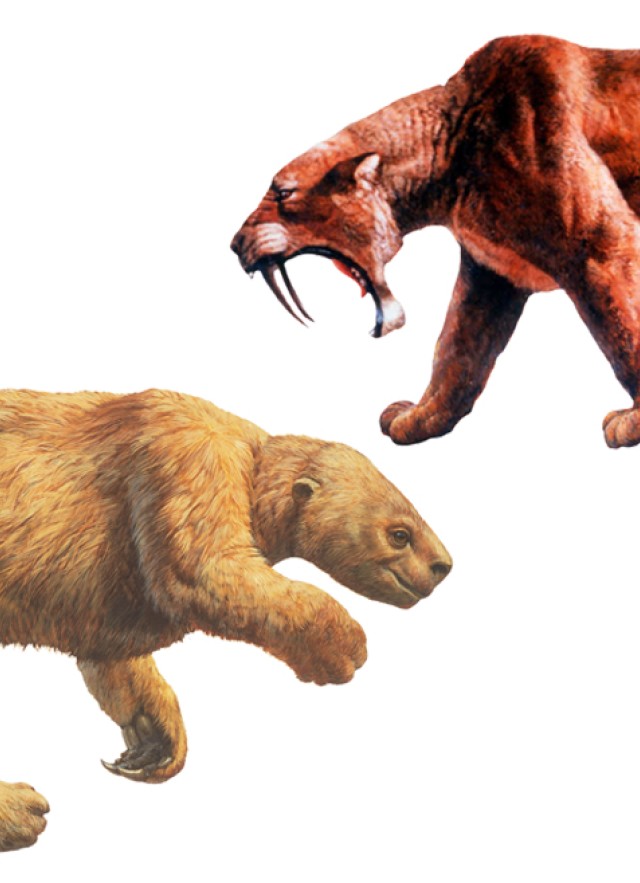
Feeling like taking a big bite into your summer? Get acquainted with the apex predator that sunk its teeth into adventure around what is now the mid-Wilshire district 40,000 years ago.
Walk in the paws of a saber-toothed cat that once roamed the same turf where La Brea Tar Pits visitors are daily planting their feet. From saber to stern, here's a basic bio of Smilodon fatalis, Ice Age L.A.'s famous feline.
Setting the scene
In the same spot along Hancock Park where Homo sapiens, like yourself, traverse today, this big cat was licking its paws after an Ice Age afternoon snack. But this colossal cat's appetite didn't always work to its advantage. Chasing prey through the Pleistocene landscape led scores of saber-toothed cats into the asphalt seeps, a gooey deathtrap. We know this because we have evidence of thousands of years of hunts preserved in tar, including the fossilized bones representing more than 2,000 saber-toothed individuals! The immense number of these found at the Tar Pits helped secure Smilodon fatalis as California’s state fossil!
To glean more information about the diet and the environment of these and other Ice Age creatures, researchers use collagen preserved in the asphalt to conduct isotopic studies and carbon-date the fossils to determine their age. The millions of fossils in La Brea Tar Pits collections even offer clues to the mystery of why Smilodon went extinct around 11,000 years ago, at the end of the last ice age.
How did Smilodon stand up against other long-gone big cats?
At about five feet long and three feet tall and weighing between about 350 to 620 pounds, it was a contender!
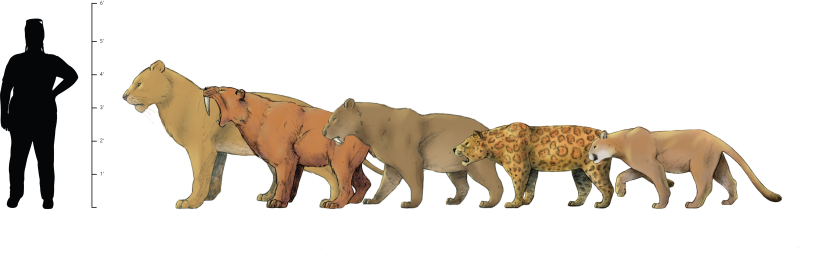
La Brea Tar Pits Excavator, Laura Tewksbury, for scale.
A coat of many colors
We have no preserved fur of Smilodon, but like ginormous cats today, their coat color and pattern probably helped them blend into their environment (the better to sneak up on you, my dear!).
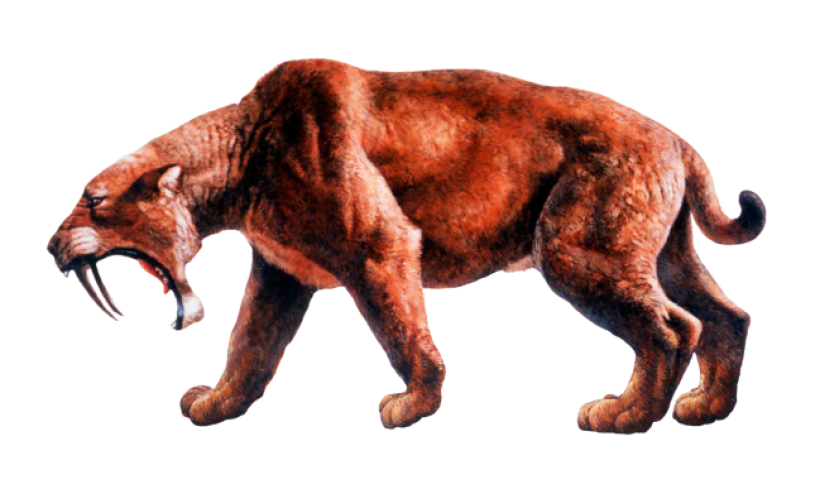
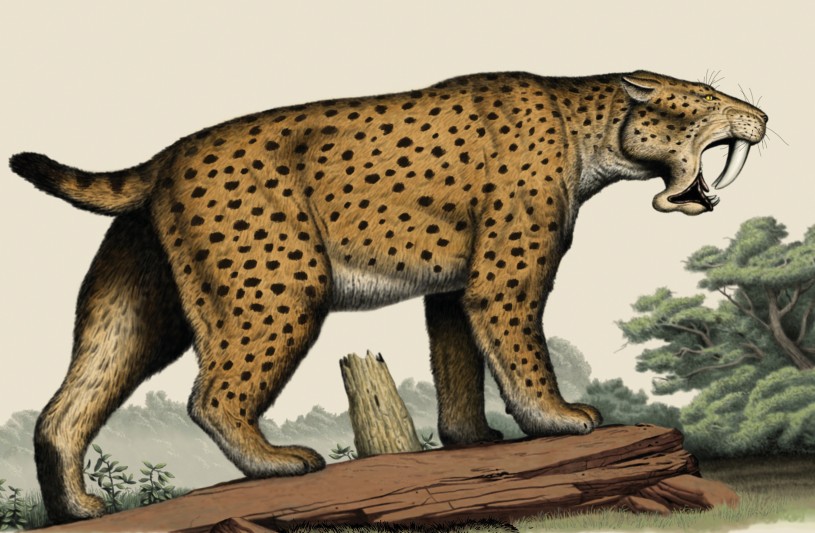
Hold on a second...
Fossils tell scientists that saber-toothed cats were ambush predators who waited for the right moment to surprise their food, then used their strong front limbs to hold their prey down. We know this from both the shape of the bones (super-robust forelimbs) and the super cool paleopathology research led by folks on the La Brea Tar Pits team, showing where these mighty cats got injured. La Brea Tar Pits researchers analyzed thousands of bones and found evidence of battle wounds on the shoulders and lumbar vertebrae (lower back), traumatic injuries sustained from all that hunger-fueled pouncing and pinning.
Fossils can also help us figure out how S. fatalis used its long, serrated canines as a hunting aid. Since scientists don’t find many teeth that broke during the cats’ lifetimes at La Brea, the canines likely helped them deliver an initial puncture wound to a soft spot on prey, rather than use their sabers to grab and hold on.
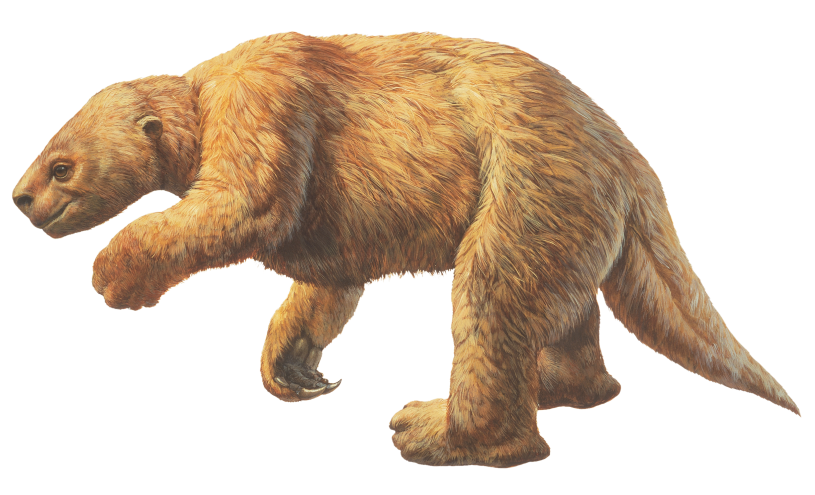
....or perhaps the vibe of your summer months is chill? We've got an Ice Age giant to inspire you!
These famously slow-paced creatures lumbered around mid-Wilshire at the same time as the predatory Smilodon (unfortunately for them!). Unlike the tree sloths we know today, these furry beasts were the size of elephants and weighed up to 3,000 pounds!
Three different types of sloths have been found at the Tar Pits: the Shasta, the Jefferson’s, and the Harlan’s ground sloth. Weighing up to 3,000 pounds, Harlan’s ground sloth (Paramylodon harlani) is the largest and most common one. It had small nodules of bone (osteoderms) buried in its skin, making it a well-armored giant of the Ice Age.
This summer, learn all about these amazing mammals in our Excavator Tour. Outside, visit Project 23 and Pit 13, where excavators have painstakingly removed sloth fossils over decades. Stand next to giant sloth statues in the park to get a sense of their height and girth.
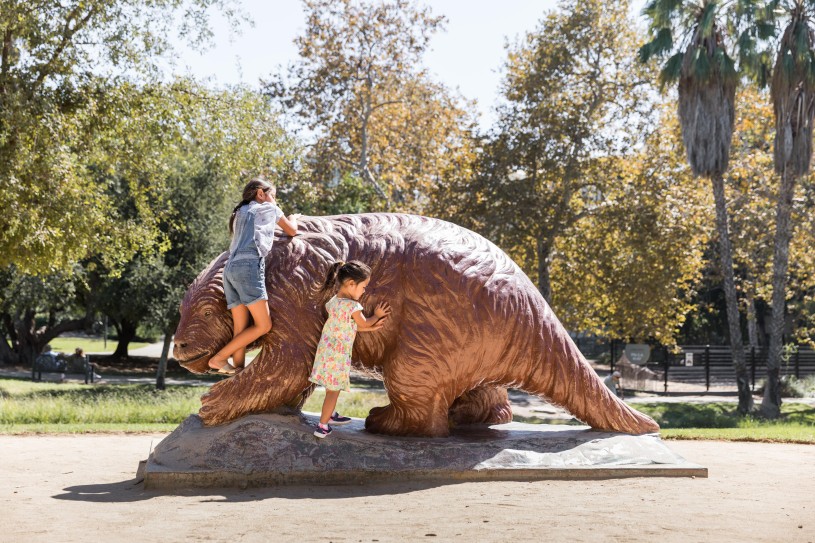
Outdoors
Snuggle in the arms of our very own giant sloth statue!
Inside, watch as our scientists sort, clean, and catalog all kinds in the Fossil Lab. Look around at mounted skeletons of this mighty big, slow-moving mammal.
